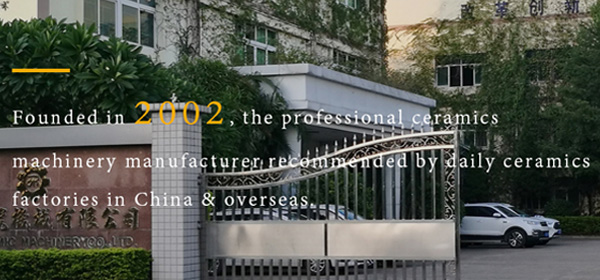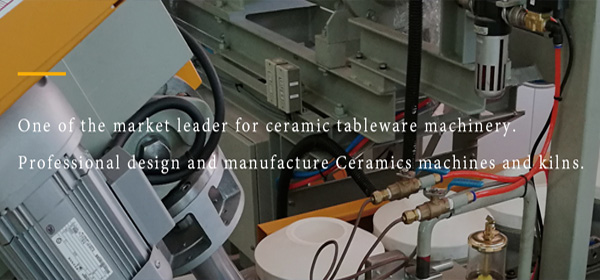News
Characteristics of grouting and requirements for mud
(Summary description)
Grouting is suitable for all kinds of ceramic products. Generally speaking, any shape, irregular shape, thin wall, large volume and small size requirements can be formed
Information
First, the characteristics
Grouting is suitable for all kinds of ceramic products. Generally speaking, any shape, irregular shape, thin wall, large volume and small size requirements can be formed by grouting, such as vases and teapots in daily-use ceramics. , cup handles, oval discs, etc. can be formed by this method.
The structure of the green body after grouting is relatively uniform, but the water content is large and uneven, so the drying shrinkage and the firing shrinkage are large. Due to the adaptability of the grouting molding method, as long as there is a porous model (generally a plaster mold), it can be produced, regardless of the size of the production, easy to put into production, and fast, so it is widely used in ceramic production. However, the grouting process has a long production cycle, many manual operations, high labor intensity, large floor space, and large mold consumption, which are the inadequacies of the grouting process. With the development of mechanization, continuousization, automation of grouting and the wide application of high-pressure grouting, its shortcomings will be gradually solved, making grouting more suitable for modern production.
Second, grouting molding requirements for mud
Grouting is based on a flowable slurry and a water-absorbable model. In order to smooth the molding and obtain a high-quality blank, the following basic requirements are imposed on the slurry for grouting:
1. Good liquidity
That is, the viscosity of the mud is small, which ensures that the mud can flow smoothly in the conveying pipe and can be injected into various parts of the model. A good mud should be like a cheese, flowing into a continuous thin line.
2, stability is better
After the slurry is left for a long time, it will not precipitate any components (such as feldspar, quartz), etc., and the mud parts can maintain the same composition for a long time, so that the parts of the grouting body are evenly composed.
Because clay, feldspar, and quartz mud are polydisperse systems, this system is particularly unstable. Many small particles in the mud tend to stick to large particles, and large masses become centers of condensation. Thereby the stability of the mud is lowered. From the theory of mud agglomeration, in the mud, the sedimentation speed of the individual particles is slower than that of the pellets. For this reason, we can minimize the difference in the size of the particles in the mud, that is, try to make the particle size tend to be consistent, so as to obtain Mud with better stability.
3, with appropriate thixotropy
The viscosity change of the mud after storage for a certain period of time should not be too large, so that the mud is easy to transport and store, and at the same time, the blank after demolding is not subjected to slight vibration and soft collapse. The thixotropy of the slurry for grouting is too thick and thick, and it is inconvenient to pour. When the thixotropic property is too small, the green body is liable to collapse, so proper thixotropy is required.
4, less water content
Under the premise of ensuring fluidity, the water content of the mud is reduced as much as possible, which can shorten the grouting time, increase the strength of the green body, reduce the drying shrinkage, shorten the production cycle and prolong the service life of the gypsum.
5, better filterability
That is, the moisture in the mud can be absorbed by the model smoothly through the mud layer attached to the wall of the model, and the filterability of the mud can generally be adjusted by changing the content of the inert material and the plastic raw material in the mud.
6, the formation of the blank should have sufficient strength
7. The blank body should be easily demoulded after grouting
8, as little as possible in the mud containing bubbles
Mud density, viscosity, thickening degree, water content, suspension and other indicators are commonly used in production to control mud performance. The forming properties of the slurry can also be judged by measuring the suction speed of the slurry, the demolding condition, the water content of the green body, and the strength of the green body.
Factors affecting the drying speed of the product
Under the premise of ensuring the quality of green body, speeding up the drying and shortening the production cycle are of great significance to ceramic production. Therefore, the factors affecting the drying speed must be fully understood to determine the optimum drying speed.
From the point of view of the drying process, the essence of drying is the diffusion of water, and the diffusion of water is mainly carried out by internal diffusion and external diffusion. Therefore, the drying speed mainly depends on the internal diffusion speed and the outward diffusion speed of the green body. At the same time, the drying speed of the blank is also affected by factors such as heat transfer efficiency, slime performance, shape and thickness of the blank.
I. Factors affecting internal diffusion
1. Influence of slime performance
For example, if there are many bismuth materials in the slime, the molding water is small, the gap between the particles is also large, and the capillary existing in the green body is also thick, so the internal diffusion resistance is small, the moisture moves fast, the diffusion speed is fast, and the drying is fast; The clay has a high content of raw materials and high particles. Therefore, the formed body has a large density, a small particle gap, and the capillary present in the green body is fine, the internal diffusion resistance is large, the moisture movement is slow, the diffusion speed is slow, and the drying is slow.
2, the impact of the body temperature
The temperature of the green body is high and the viscosity of the water is significantly reduced, such as a temperature of 70 degrees Celsius and a viscosity of about one quarter of zero degrees Celsius. Although the temperature is high, the surface tension of water in the capillary is reduced (for example, the surface tension of water at zero degrees Celsius is 7.564*10-3Pa, and the surface tension of water at 70 degrees Celsius is 6.46-10-3Pa, but the reduction is small, Since the effect of the specific viscosity reduction is small, by heating the green body and increasing the temperature of the moisture in the green body, the moisture in the green body can be easily moved to the surface.
3. Influence of the difference between the surface and internal moisture concentration of the blank
As the surface moisture of the blank evaporates, the surface moisture concentration is lower than the internal water concentration, creating a humidity gradient from the inside to the surface, causing the moisture to move toward the surface, which is good for drying.
4, the influence of temperature distribution in the body
In the drying process, if the internal temperature of the green body is higher than the surface temperature, the direction of thermal diffusion is consistent with the direction of wet diffusion, which is favorable for drying.
Second, factors affecting outreach
1. The influence of air temperature and humidity
The amount of air absorbing water vapor increases sharply with increasing temperature and decreases as the relative humidity increases. If the temperature of the air around the blank is low and the humidity is high, the evaporation rate of moisture will decrease. If the air is saturated with water bubbles, the outflow rate is zero; conversely, if the air temperature is high and the humidity is small, the water evaporates quickly and the drying is fast.
That is to say, the evaporation rate is related to the difference in water vapor concentration, the partial pressure difference, and the temperature difference between the surface of the blank and the surrounding medium; the larger the difference, the faster the drying speed.
2. The influence of air flow velocity and flow direction
In the drying process, increasing the flow velocity of the air can reduce the thickness of the air film which is not easy to flow on the surface of the blank, so that the blank is often in contact with fresh, low-humidity air, enhancing the convective heat transfer between the air and the body, thereby accelerating The rate of evaporation of water. Further, when the flow direction of the air is opposite to the moving direction of the green body, the evaporation speed of the water can be increased.
3, the impact of air flow
Increase the air flow, increase the amount of water taken away by the air, and increase the drying speed. Practice has proved that the drying speed can be greatly improved by using high-speed and uniform hot air to dry the blank. Here, the wind speed (generally 5m/s or more) must be ensured to achieve the purpose of rapid drying.
Third, other influencing factors
The shape and thickness of the green body have a significant effect on the drying cycle. Under the same drying speed (unit area, amount of water evaporated per unit time), the degree of drying of the various parts of the green body is greatly different. The edge of the blank has a large evaporation area per unit weight of the billet, and the drying is quick, and the thin-plate-shaped blank (wall tile body) has a relatively thick drying body. Because of the large size and complicated shape of the blank, the sanitary porcelain body should not be too fast to dry.
The placement of the green body in the drying chamber also directly affects the drying cycle of the green body and the uniformity of drying.
In summary, the main factors affecting the drying speed (drying time) are:
1. Structure and properties of the blank
2. The shape, size and thickness of the blank
3. The initial and final moisture of the green body;
4. The size and direction of the temperature, humidity and speed of the drying medium;
5. Contact between the drying medium and the blank;
6, heating method (drying method);
7. Structure and type of dryer.

- Ceramic technology equipment is favored in India 50% of the market share belongs to China 2018-09-17
- Analysis of common problems in stamping 2018-09-17
- Analysis of common problems in stamping 2018-09-17
- Characteristics of grouting and requirements for mud 2018-09-17
- The website of Dongguan Jinri Ceramic Machinery Co., Ltd. has been revised! 2018-09-17
COPYRIGHT © 2021 JINRI Ceramic Machinery Co., Ltd ALL RIGHTS RESERVED








